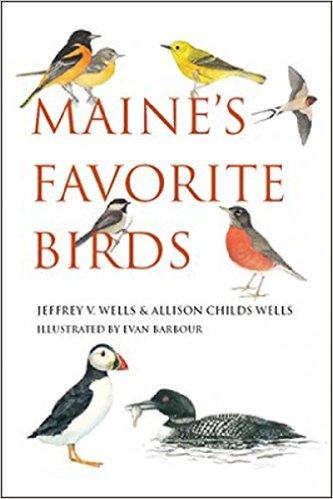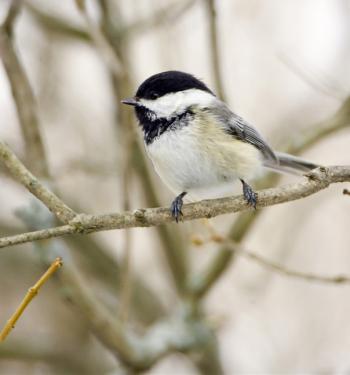Tales of Maine’s Favorite Birds
Just recently we saw a social media post from a New York City birder who showed a photo of a black-capped chickadee and commented that it was the first one of the season at the Central Park compost heaps. We surmised from that post that migrant black-capped chickadees come into Central Park for the winter every year and are eagerly awaited by local birders there.
Black-capped chickadees seem to be a favorite wherever they occur. Certainly, they are favorites here in Maine as evidenced by the fact that the chickadee is our state bird (even if our legislators still refuse to clarify whether it is the black-capped or the boreal chickadee!). We see them year-round in our backyards, parks, and forests, but some of the individuals we see in winter are actually migrants from farther north that may join some of our residents that stay put. Studies in which chickadees are banded at backyard feeders have found that there are usually three or four times as many individuals coming to your backyard feeder as you can count at any one time.
Nuthatches, too, both the larger white-breasted and the smaller red-breasted, are familiar and favorite backyard birds here in Maine and throughout the Northeast. Nuthatches are said to be the only birds in our area that regularly walk both up AND down the trunks of trees. Chickadees don’t really walk up and down tree trunks at all, while woodpeckers and brown creepers will go up but never down (at least, face down) a trunk.
Dark-eyed juncos and white-throated sparrows have begun arriving in numbers across Maine as many migrate south from their boreal Canadian breeding grounds where the largest proportion of the nesting population occurs each summer (yes, both species also nest in Maine). Flocks of juncos may be seen flushing from the roadside as you pass by in your car, the white sides of their tails catching the eye. The attention-grabbing flash of the white sides of the tail is thought to be a feature that can give the little birds an advantage when pursued by a hawk or mammal. The predator may focus its claws or talons on the white-sided tail, missing the body of the bird and instead dislodging a feather rather than causing lethal bodily injury.
Along the ocean shores, flocks of common eiders are settling in for the winter, some having spent the summer and others having migrated south from Canada. Bobbing in the waves, the males sharply dressed in black and white, the females in russet browns, they seem unperturbed by the coldest winds. Often a gray-backed herring gull, its yellow beak gleaming, will hang around one of these eider flocks.
Why?
They are pirates, awaiting an eider that surfaces unsuspectingly with a mussel or crab it has just captured in the icy depths. Quickly, the sharp-eyed gull will rise up and snatch the delicious morsel for itself before the eider even knows what has happened. It’s a little like what has happened to more than one newly arrived Maine tourist holding a lobster roll on the wharf behind the snack shack. Some gulls have expensive tastes!
In turn, a bald eagle sitting nearby at the top of a dark spruce may swoop down to scare the gull into dropping the food. At dumps, most eagles just sit around the edges, letting the gulls do the dirty work of digging around in the refuse to find food and then quickly giving chase when a gull appears with some piece of hunger-satisfying garbage. The gulls rarely dare to continue trying to elude the massive eagle and drop the food which the eagle promptly picks up and eats.
As we move toward the holiday season, consider picking up a copy of our book, “Maine’s Favorite Birds,” to share the wonder of birds like these that make Maine such a special place. If you want a signed copy, consider stopping by to see us at L.L. Bean in Freeport from 5 to 9 p.m. on Wednesday, Dec. 11 for the Northern Lights Author Event. And bring family, friends, and stories about your favorite birds!
Jeffrey V. Wells, Ph.D., is a Fellow of the Cornell Lab of Ornithology and Vice President of Boreal Conservation for the National Audubon Society. Dr. Wells is one of the nation's leading bird experts and conservation biologists and author of “Birder’s Conservation Handbook”. His grandfather, the late John Chase, was a columnist for the Boothbay Register. Allison Childs Wells, formerly of the Cornell Lab of Ornithology, is a senior director at the Natural Resources Council of Maine, a nonprofit membership organization working statewide to protect the nature of Maine. Both are widely published natural history writers and are the authors of the book, “Maine’s Favorite Birds” and “Birds of Aruba, Bonaire, and Curaçao: A Site and Field Guide” from Cornell Press.






























